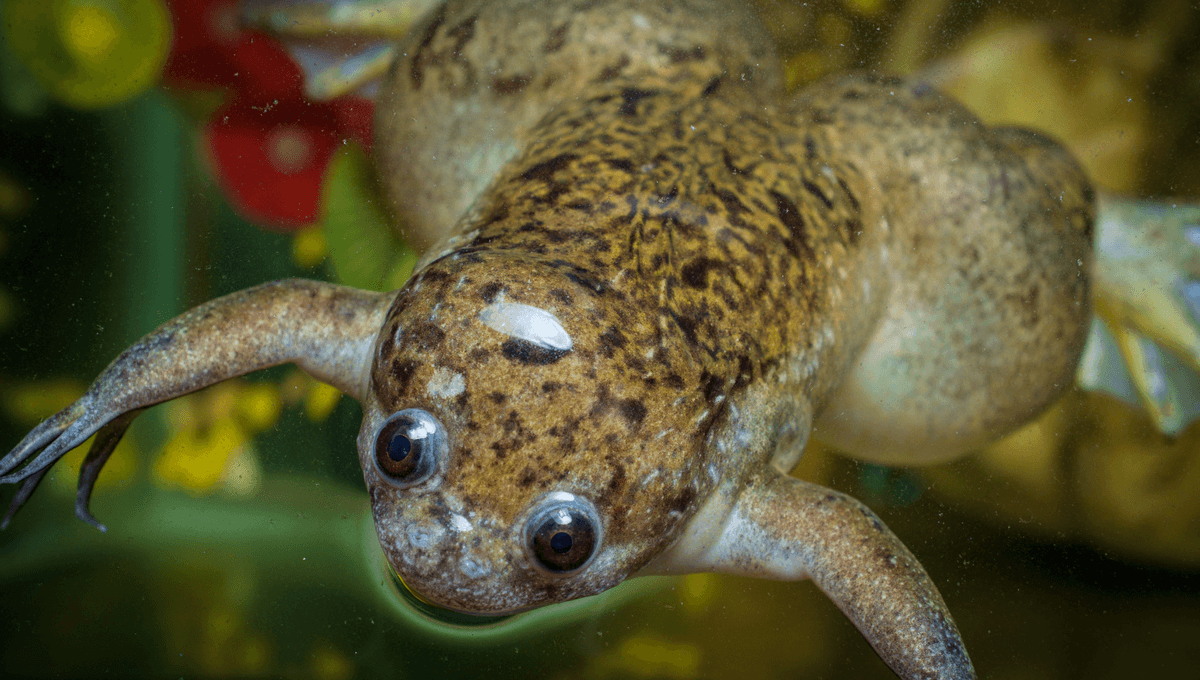
These days, checking whether you’re pregnant or not is as simple as peeing on a stick and waiting a minute or two. In fact, it’s now so quick and straightforward to get procreative peace of mind that it’s easy to forget what a modern invention these little disposable tests really are – yet for most of us, we only need to go back as far as our parents or grandparents before checking for pregnancy was a lot less simple and a lot more… medieval.
You see, far from the sterile wands we’re used to befouling today, our foremothers had to rely on something far more naturalistic to determine their pregnancy: African clawed frogs. No, that’s not a typo – between the 1930s and the 1960s, the most widespread pregnancy test across Europe and the US involved injecting the urine of potentially pregnant humans into the dorsal lymph sac of some poor unexpecting frog.
As close to witchcraft as this sounds, it’s actually based on pretty much the same science as today’s home pregnancy tests. Around a week after fertilization, a pregnant body starts producing a hormone called human chorionic gonadotrophin, or hCG – it comes from the newly-developing placenta, and it’s there to trigger the creation of other important hormones for pregnancy like estrogen and progesterone.
It’s a perfect proxy for detecting pregnancy because it turns up relatively quickly, and increases in concentration fairly predictably – that’s why some more fancy tests out there are able to tell you not just whether you’re pregnant, but roughly how far along you are as well – and it’s excreted through urine, making it easy to access. We may not have known the science behind it at the time, but it’s not for nothing that “peeing on stuff” was one of the earliest ways of detecting pregnancy known to humanity.
In modern pregnancy tests, a positive result occurs when there’s enough hCG in the urine sample to bind with antibodies embedded in the test strip. Special enzymes also bind with the hormone, changing the color of the indicator line and broadcasting whether the user is pregnant or not.
But in days gone by, we had to rely on a slightly different property of hCG: its ability to force frogs to ovulate really quickly. Go to a hospital in the 1940s or 50s and ask for a pregnancy test, and your OB/GYN would most likely go down to the facility’s frog compound – no, that’s not a joke; these amphibian testers were so ubiquitous and irreplaceable that many hospitals kept the critters on-site – and inject your urine into a pouch on one of the croakers’ backs.
Eight to twelve hours later, you’d have your answer. Either the frog would have laid eggs, in which case you’re pregnant, or it wouldn’t – in which case, you aren’t. Yyes, we really do mean eight to twelve hours later – a far, far cry from today’s one to five-minute waiting times.
Look, we understand: this all sounds like some kind of winding Grampa Simpson tale that ought to involve tying an onion to your belt and drinking turnip juice. But not only was the use of frogs as pregnancy tests totally real, they weren’t the only animal to be used in this way: mice, rabbits, toads, and rats have all faced the wee-injection at some point in history to sate the human desire to know whether or not they have a bun in the oven as early as possible. In fact, so widespread was the practice of using frogs in pregnancy tests that it’s now thought to have contributed to a global decline of amphibians in recent decades.
So, next time you’re crossing your fingers waiting for the appearance (or not) of a pink line or two on a pregnancy test, spare a thought for the African clawed frog: the trusty amphibian who suffered a pretty gross fate for our grandmothers’ peace of mind.
Source Link: Why Would You Inject A Frog With Human Pee? To See If You're Pregnant